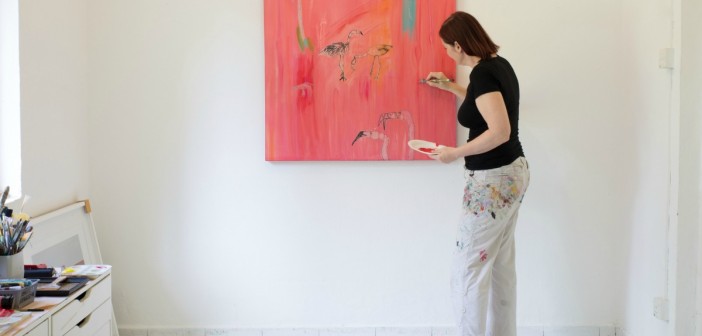TIPS ON STARTING AN ART COLLECTION
Discover what you like and don’t like. This is the most important factor to think about when purchasing art for any reason, simply because you are the one who is going to have to live with the pieces you buy. And the only way to discover your unique tastes is to get out there and explore. Start with perusing contemporary art galleries, museums, art fairs and art websites (You can find me on Saatchi Art, Art Finder and ArtStack), and make a mental note of the types of pieces that draw you in, keep you captivated and inspire you.
MAKE A PLAN
Before making any purchases, put together a coherent plan for your collection. Think about what types of art you want to focus on. For example, you may want to feature mainly photographs, landscapes, abstract pieces, watercolours or even works from a particular era. You may also want to have a more focused theme like ‘the feminine in contemporary Southeast Asian art or ‘Singaporean architecture paintings’ similar to my Singapore Landmark Collection. Budgeting is also a consideration, as this will determine the types of pieces you can include in your collection.
DO YOUR RESEARCH
Art collecting is more than just buying pretty pictures and hanging them on your walls. It is also about making informed purchases that express your personal tastes and add value to your collection. When you look at a piece you should know what you are looking at and understand what makes it good art to you. Read up on your favourite artists and pieces, check out a contemporary artist’s website to learn more about their background and body of work, meet with the artist if you can, and chat with experts like gallery owners, curators, and other collectors.
START SMALL BUT SAVVY
Contrary to popular belief, great works of art don’t have to cost a fortune. For example, photographs and works on paper tend to be cheaper than paintings on canvas, yet they can still be a great addition to a larger collection. In addition, limited edition prints are often very reasonably priced and can be very valuable if they are signed and have low individual edition numbers – I believe affordable art is important, fine out more about that here!
DOCUMENT YOUR ART
Document your art. The better documented an art collection is, the more valuable it will be should you ever want to sell your pieces or pass them down to future generations. Try to write down as much information as you can about each piece including the artist bio, the date it was purchased, any unique stories about the piece, whether it was previously owned by somebody else, and whether it was exhibited or written about.
So there are the basics! Go for it and most importantly ENJOY!
Re published with permission from





2 Comments
This is some really good information about art collection. I liked that you talked about how it would be best to do some research. I don’t know what type of art I like so It does seem like a good idea for me to do some research about art.
Sorry for the delayed reply! We are glad the article gave you some ideas 🙂